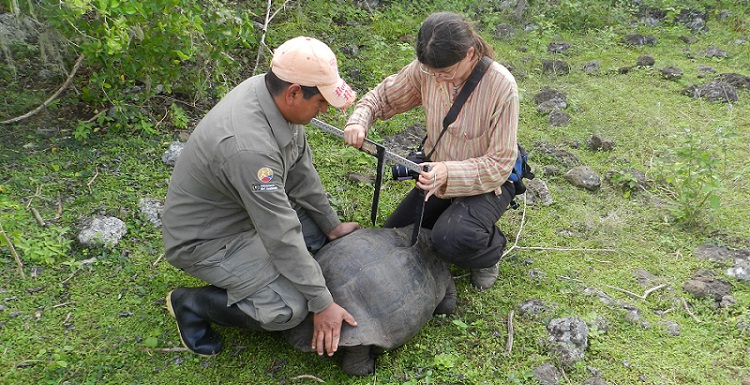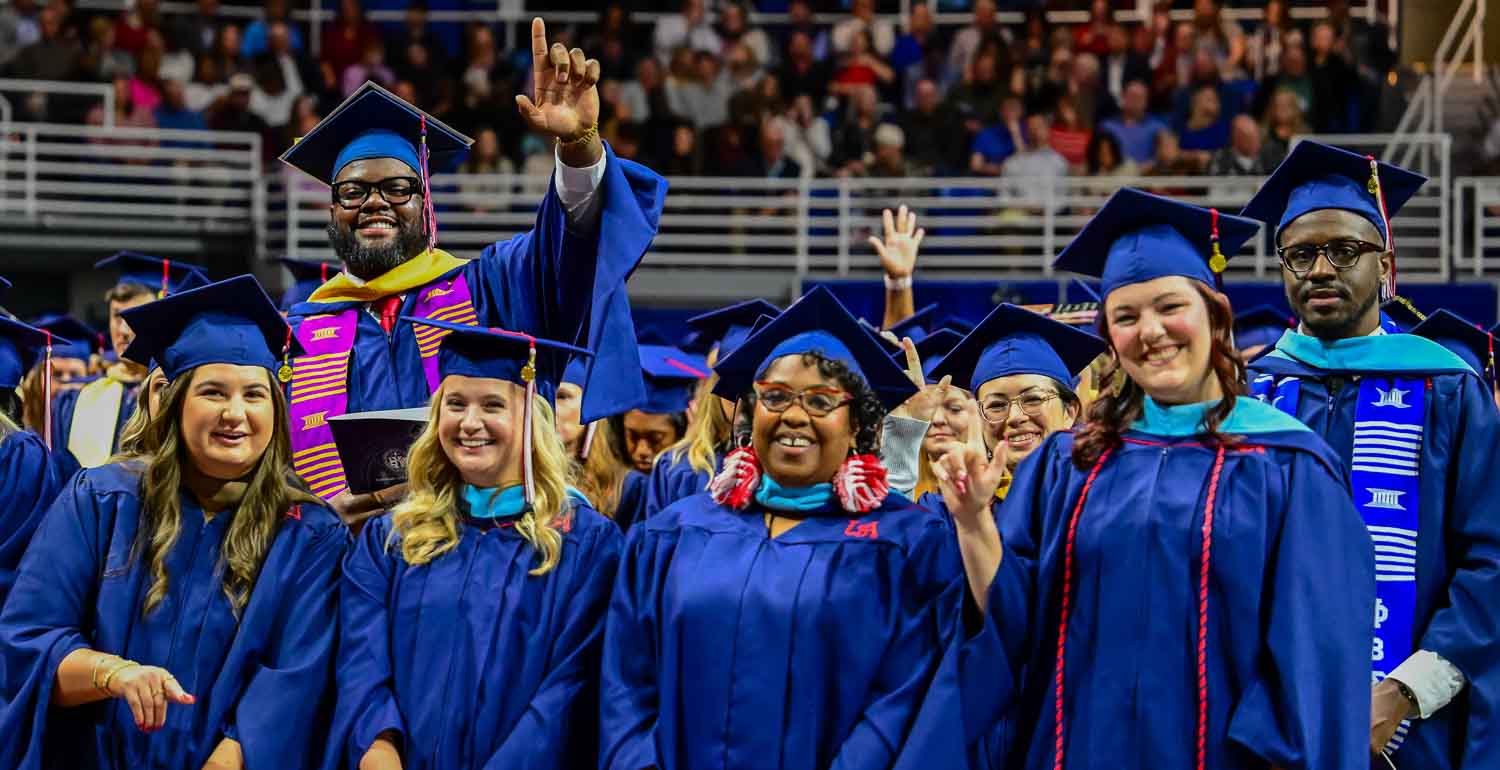USA Faculty Help Name New Tortoise Species
Posted on October 22, 2015

For biologists, Santa Cruz Island, located in the center of the Galapagos, is a dream place to do research. But helping to name a new species of Galapagos Tortoise is a career highlight for University of South Alabama researchers Drs. Ylenia Chiari, assistant professor of vertebrate ecology, and Scott Glaberman, assistant professor of animal physiology, in the department of biological sciences in the College of Arts and Sciences.
Until now, it was assumed that tortoises on the eastern and western sides of Santa Cruz belonged to the same species. Chiari and Glaberman teamed up with several other international researchers, and they have completed an academic research paper, which has been recently published in PLOS ONE.
Genetic studies have determined that Santa Cruz Island hosts two different species of the giant tortoise. Currently, the species of the western Santa Cruz Tortoise has 2,000, which are located in an area known as the “Reserve.” The newly named species from of the Santa Cruz Tortoise has about 200, located near a hill named “Cerro Fatal.” Its distribution, nesting zones, abundance and potential threats are not well known. As a distinct species, the Eastern Santa Cruz Tortoise will require closer attention.
“The naming of this new species will increase efforts to protect and restore the Eastern Santa Cruz Tortoise,” said Dr. Gisella Caccone, director of the Yale University DNA Analysis Facility and research scientist. “Its low numbers, limited geographic range, and reduced genetic diversity make it vulnerable. As a newly recognized species, it will now receive the attention needed to ensure its survival."
The conservation effort of the newly named Eastern Santa Cruz Tortoises will be important. The populations of giant tortoises were devastated throughout the Galapagos Islands due to human exploitation over centuries, introducing species and habitat degradation. The Giant Tortoise Restoration Initiative is a collaborative project of the Galapagos National Park Directorate, the Galapagos Conservancy and others. The initiative is focused on building the long-term restoration of all Galapagos tortoise populations to historical numbers.
“This is an exciting moment in the history of Galapagos giant tortoises,” said Dr. Linda Cayot, science advisor for the Galapagos Conservancy. “Over the last several years, the ever-growing role of genetics in guiding development of conservation strategies for Galapagos tortoises continually requires us to think in new ways.”
The numerous islands of Galapagos are known for the giant tortoises, which are considered the largest tortoise species in the world.
“I love turtles,” Chiari noted. “As an evolutionary biologist, I have been doing this type of research since 2006. On this research project, I worked on the morphology to compare the size and shape of the shell between the two tortoise species on Santa Cruz. The Galapagos is an ideal place to address evolutionary questions.”
Glaberman has done research with Chiari since 2006, and he recently joined the University in August.
“I did help collect data and perform the genetic analysis on the Eastern Santa Cruz Tortoise,” he said. “Now that we have named this new species of tortoise, our job is to help translate the science to policy makers and conservationists so that they can best protect the tortoises.”
The new Eastern Santa Cruz Tortoise was named in honor of Fausto Llerena Sanchez, known to his colleagues and friends as “Don Fausto.” Don Fausto dedicated 43 years of service to the giant tortoise conservation as a park ranger for the Galapagos National Park Directorate. He was the primary caretaker at the Tortoise Breeding and Rearing Center on Santa Cruz, which bears his name. The restoration of several tortoise species is due in large part to Don Fausto’s dedication and efforts.
“The description of a new Galapagos tortoise species, the result of a long-term collaboration between natural resource managers and scientists, constitutes a challenge for us to intensify the efforts of the Galapagos National Park Directorate to ensure its protection and long-term conservation,” said Alejandra Ordonez, director of the Galapagos National Park.
For more information, visit https://www.galapagos.org/conservation/giant-tortoise-restoration/ and http://www.yleniachiari.it/.





